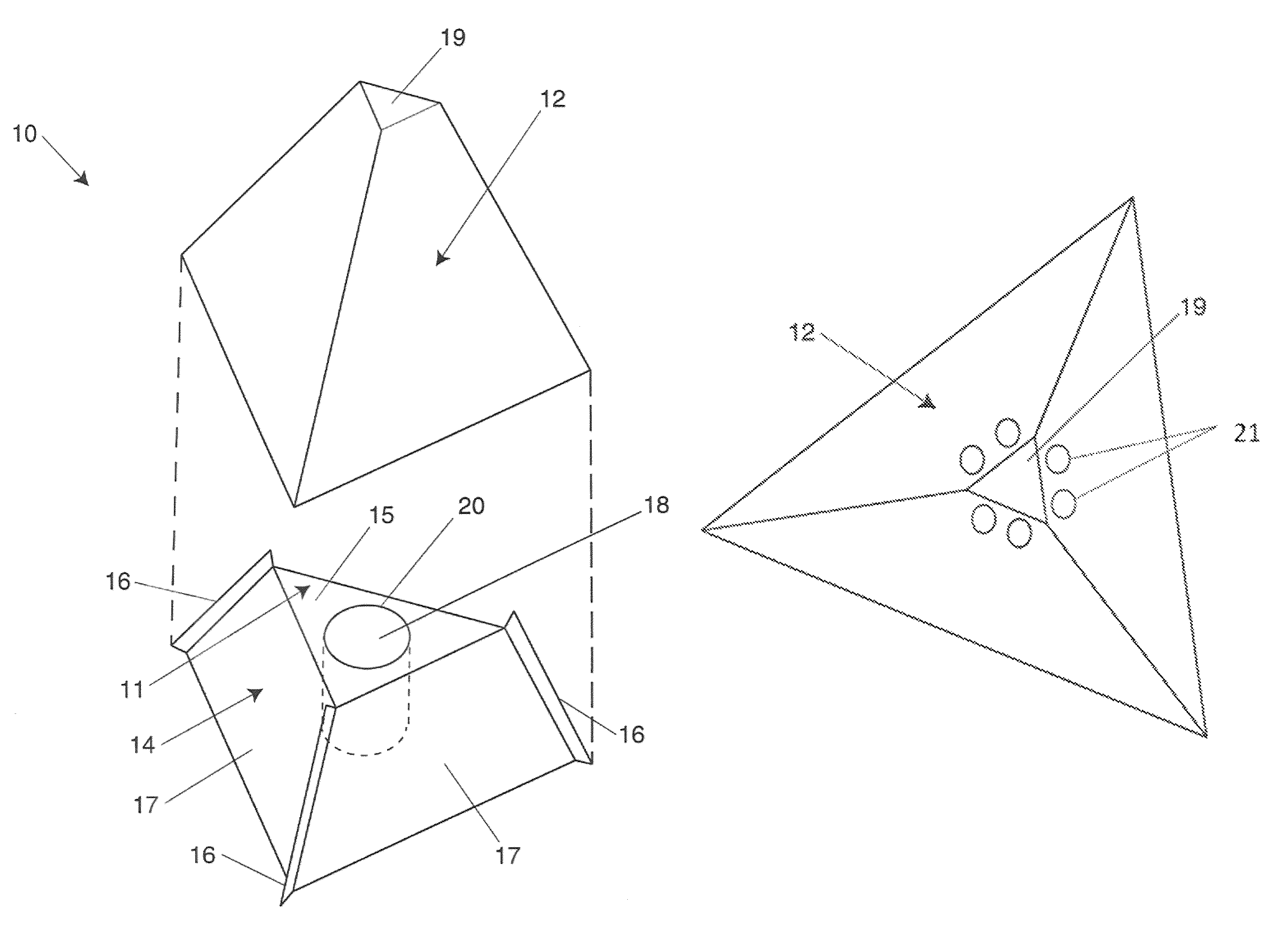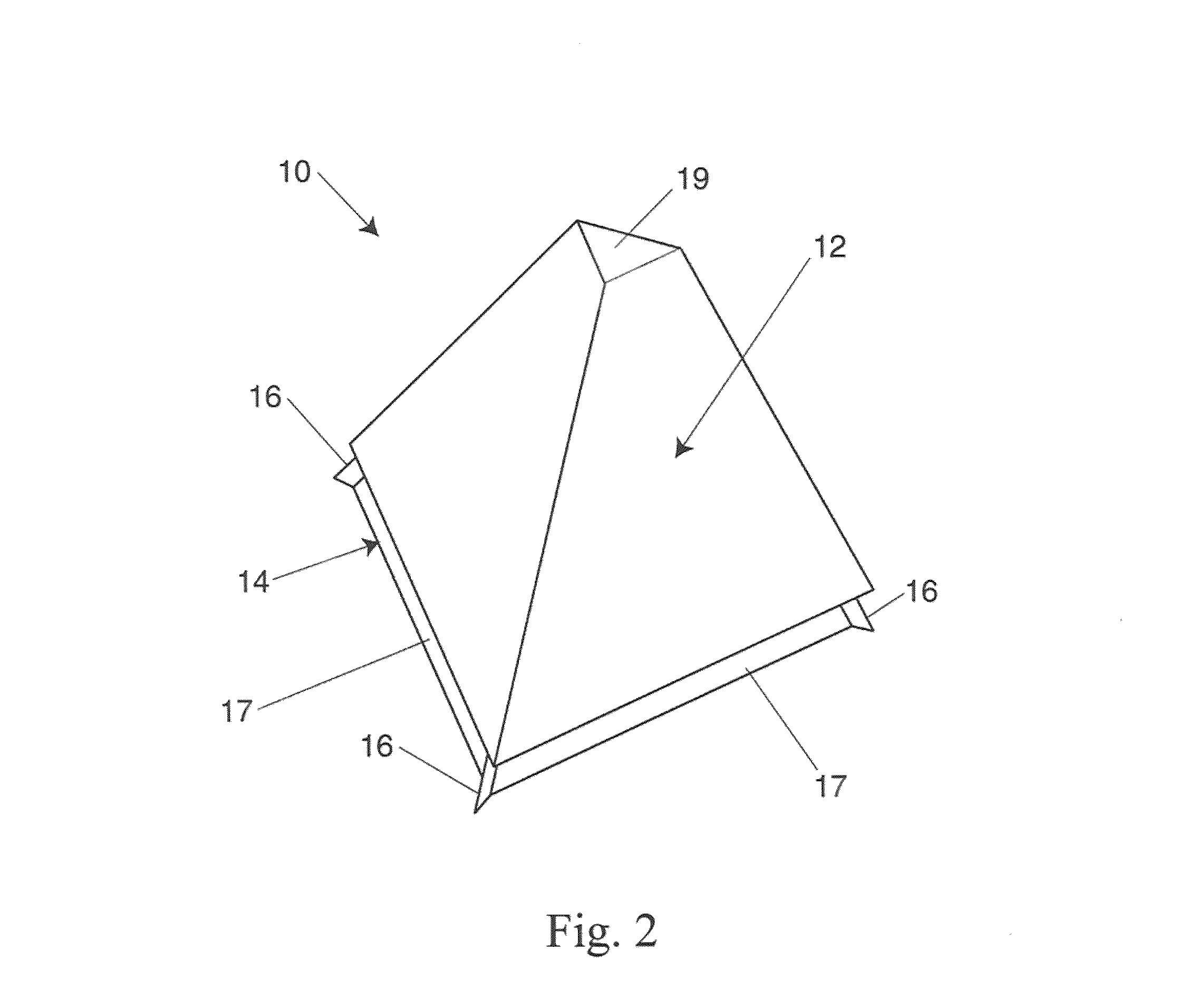Terrestrial arthropod trap
a technology for terrestrial arthropods and traps, which is applied in the field of traps for terrestrial arthropods, can solve the problems of destroying physical collection of arthropods within ground cover, affecting the effectiveness of current sampling traps, and affecting the survival of arthropods,
- Summary
- Abstract
- Description
- Claims
- Application Information
AI Technical Summary
Benefits of technology
Problems solved by technology
Method used
Image
Examples
first experimental
Series
[0033]In the first series of experiments, red flour beetles were tested for a response to LEDs emitting light in the UV and visual light ranges. In each trial, 10 Tribolium were released into the center of the arena and their movements were recorded for five minutes.
[0034]The number of beetle visits to the respective LED lights was recorded. This insured that all recorded attractions were individuals moving from the center to the side of the arena as opposed to simply following the edges of the arena. Each individual was able to visit an LED more than one time. The red flour beetles tested in this experiment were taken directly from lab cultures at 1-2 wk post eclosion.
[0035]The LEDs used in the first trial were blue (410 nm), near UV (390 nm) and UV (380 nm and 360 nm). After the beetles were released in the center of the arena, more beetles were attracted to the LEDs in the near UV range (390 nm) than any of the other LEDs.
[0036]The near UV lights were then compared to LEDs ...
second experimental
Series
[0037]In the second series of experiments, traps with LEDs on the bottom, on the top, and with no LEDs were tested competitively. The experiments were conducted in a shed approximately 9 meters long and 3 meters wide. All visible cracks in the floor and walls as well as areas around the door were sealed to ensure that no light other than the LEDs was present.
[0038]For each trial in the second series of experiments, 300 unsexed red flour beetles between one and two months old were released into the shed. Each trial lasted 24 hours. Between trials the shed was vacuumed to remove remaining individuals. The traps used in the trials were conventional dome-type insect traps that are currently available on the market. The LEDs were placed either at the top or the bottom of each trap. The “control” trap design exhibited no LEDs.
[0039]The LEDs were rated at 390 nm with a band width of 385-395 nm. The optical power of the LEDs was 10 mcd per LED. A 6 volt battery was used to power the L...
third experimental
Series
[0040]In the third series of experiments, traps were configured with a 390 nm LED placed at the top of the trap. Some of the traps included a chemical attractant and some of the traps did not. As in the second series, the traps were placed along the longitudinal axis of the shed and evenly spaced from each other and from the walls. Data collected included both beetles captured in the respective trap pitfalls (i.e. “In LED”) and also beetles collected within 0.5 m of the trap (i.e. “Around LED”). The results of the third series are shown in FIG. 8.
PUM
 Login to View More
Login to View More Abstract
Description
Claims
Application Information
 Login to View More
Login to View More - R&D Engineer
- R&D Manager
- IP Professional
- Industry Leading Data Capabilities
- Powerful AI technology
- Patent DNA Extraction
Browse by: Latest US Patents, China's latest patents, Technical Efficacy Thesaurus, Application Domain, Technology Topic, Popular Technical Reports.
© 2024 PatSnap. All rights reserved.Legal|Privacy policy|Modern Slavery Act Transparency Statement|Sitemap|About US| Contact US: help@patsnap.com










